Did you know that Georgia has seven natural wonders? One of these is the Okefenokee Swamp at the southern end of the state. The name derives from the Native American term “Land of the Trembling Earth” which is exactly the sensation one would feel when stepping on the soggy masses of soil deposits.
Consisting of 438,000 acres of wetlands (or roughly 650 square miles), the Okefenokee swamp remains the largest blackwater swamp in North America. The black water comes from tannins on the bark and leaves that drop into the water. However, if you scoop up water in your hand, the water is more of a dirty orange color.
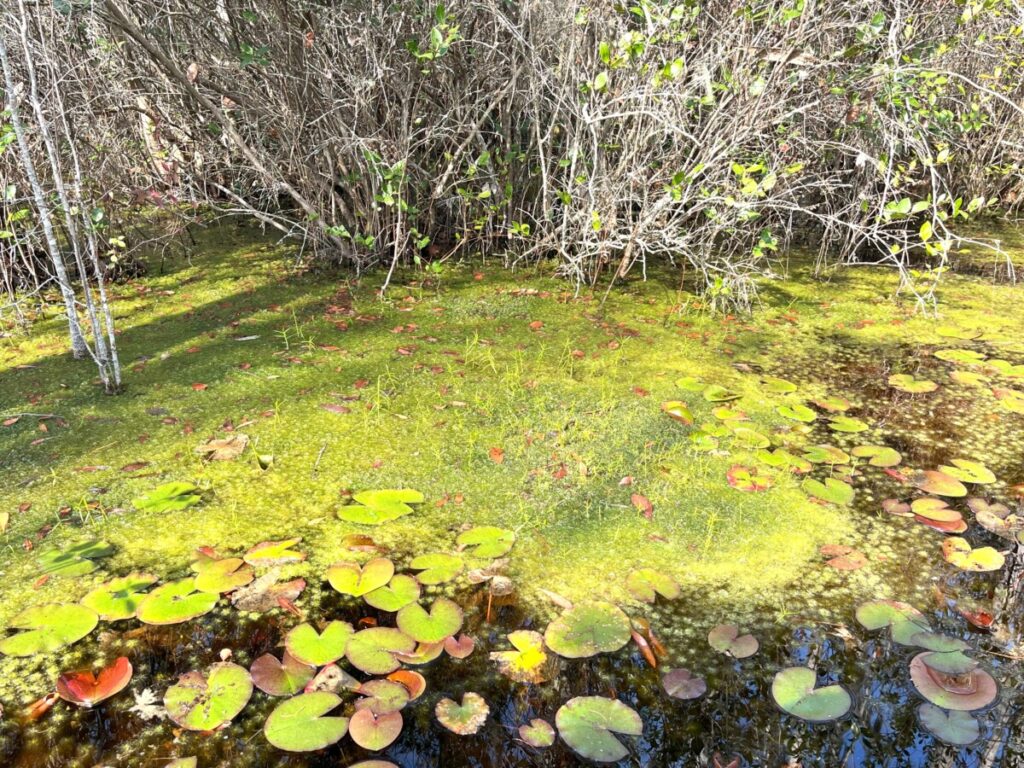
The Okefenokee Swamp lies in a remote area of Georgia with few roads or cities nearby. The Okefenokee Wildlife Refuge has a main entrance about 11 miles from Folkston (pop. 4,500) and a smaller entrance at the Stephen C. Foster State Park about 17 miles from Fargo (pop. 250). Both areas offer boat rentals, guided boat tours, walking trails, and camping.
Okefenokee Swamp Park
At the north end of the swamp, however, the privately owned Okefenokee Swamp Park consists of 1,200 acres with activities including boat tours, train tours, and nature exhibits. We chose to visit the park primarily because it lies closer to Waycross (pop. 13,000).
I felt concerned the park would be too touristy, but that wasn’t the case at all. While the park reminded me of an older, family-style attraction, the staff knew everything about the swamp, nature, environment, ecosystems, etc. The park also contains a snack bar, gift shop, and display area of live alligators.
Okefenokee Boat Tour
By far, the best way to experience the swamp is by boat. We loaded up on flat-bottomed skiff boats which accommodated about 20 people. Our guide Hannah steered the boat through the narrow canals surrounded by cypress trees.
Originally inhabited by Native American peoples from the Seminole, Creek, and Timucuan cultures, the Okefenokee became a popular spot for cypress logging by the 1900s. Fortunately, the federal government purchased the area in 1936 allowing over 400 species, including 60 species of reptiles and 200 species of birds to flourish.

Right about that time, Hannah pointed out an alligator on the banks. In the past 80 years, there hasn’t been a recorded case of an alligator attack on a human.
We also passed by a moonshine still. Before the area became protected, people lived along the swamp. These people may have been outcasts from their families or those wanting to hide out from society. During prohibition, the remoteness of the area proved an excellent spot for making moonshine.

At Mirror Lake, Hannah docked the boat and we stepped out to walk on a boardwalk. While the 90-foot observation tower is currently closed, we took the short walk to Skull Lake. Along the side, tons of green algae floated on the surface of the blackwater. The algae consists of bladderworts, a carnivorous plant species with small sacs to collect insects. Back in the boat, we also spotted pitcher plants which eat insects, flies, and spiders that fall into their trap.
Okefenokee Train Ride
The 1.5-mile train ride proved to be my least favorite activity. We found it hard to hear the narrator over the loudspeakers and the train moved very slowly. I’m sure the train is a hit with families toting around young kids, but I would have preferred a walking trail.
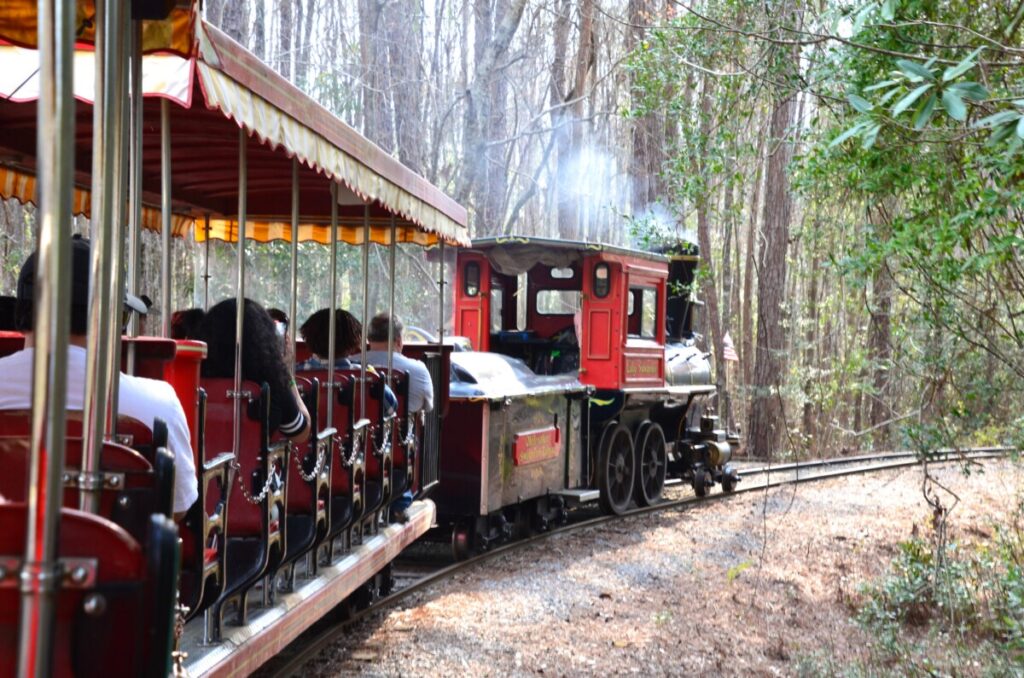
The train passed another moonshine still, as well as a turpentine still. Then, we stopped at Pioneer Island. The area features a recreated version of the Wildes family log cabin, where the last Indian massacre occurred in the state.
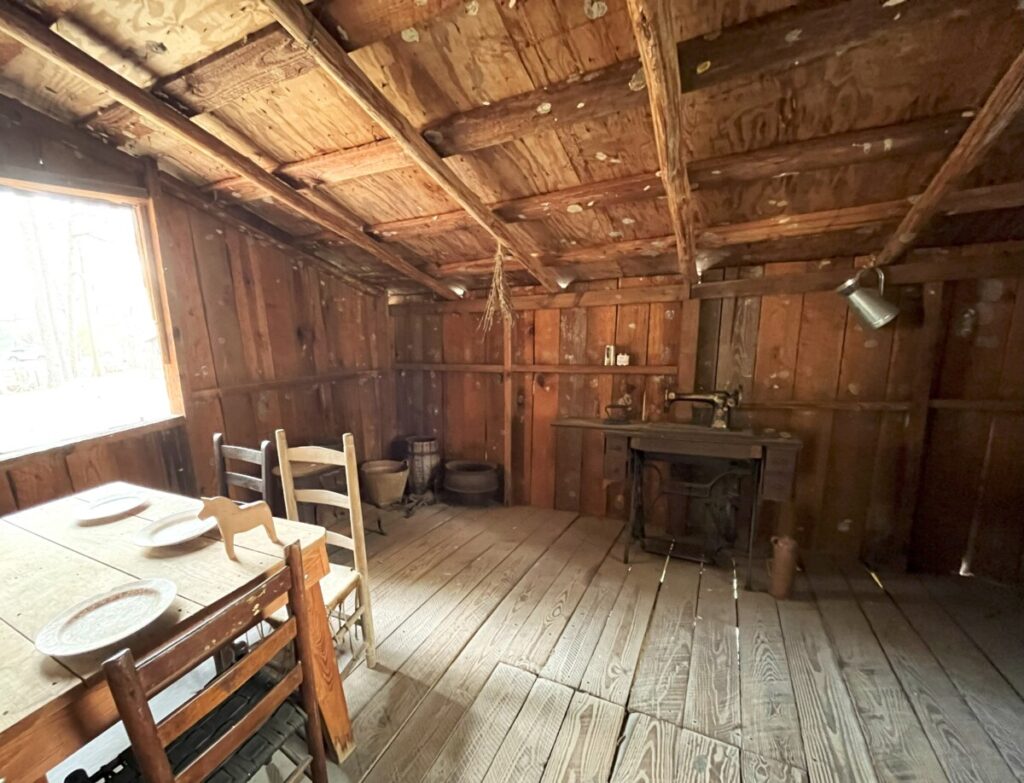
On July 22, 1838, Seminole Indians attacked the Wildes family inside their cabin nearby. Maximillian Wildes, his wife, six of their children, and a cousin were killed. Fortunately, four sons and another cousin survived but nothing remained of the cabin. Later, descendants of the Wildes family built the replica in honor of their family members.
We walked around the rest of the pioneer area with farm equipment, barns, and even a large alligator hanging out on a rock. At this point, we decided not to reboard the train and instead walked back to the visitor center.
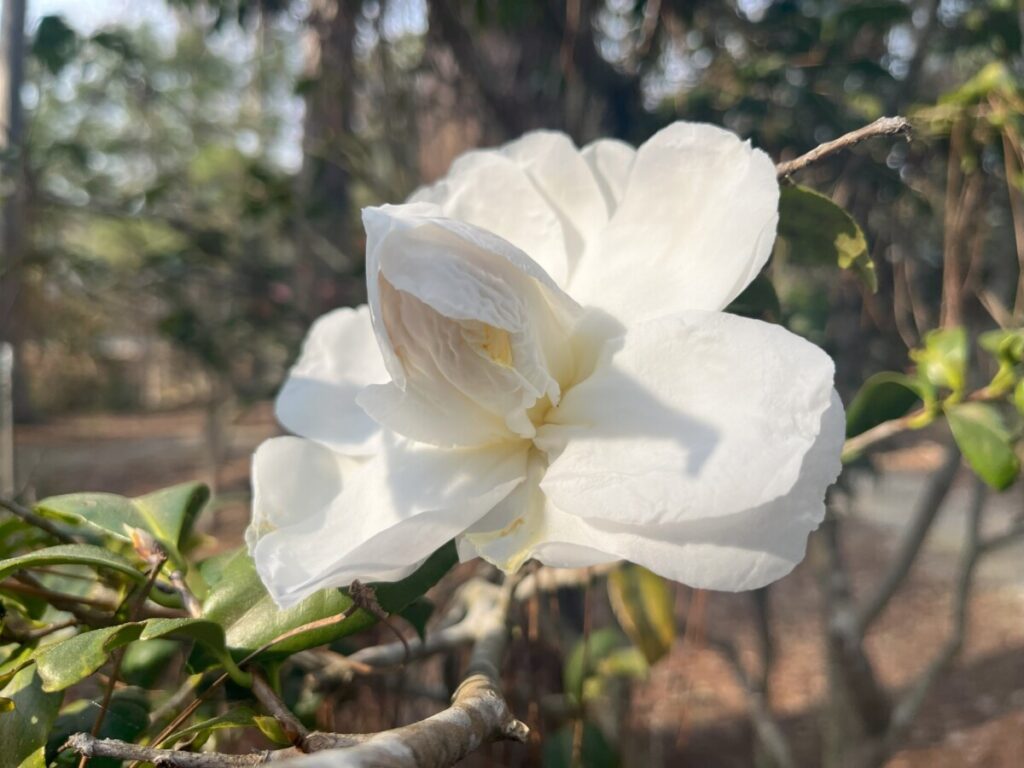
Georgia boasts a camellia trail with more than 30 public gardens throughout the state. The Okefenokee Swamp Park features a camellia garden next to the parking lot. We walked through the trails and saw beautiful full blooms bursting in red, pink, white, and even striped pink/white varieties.
Okefenokee Nature Show
To be honest, I didn’t expect much from the nature show and booked it for the last activity of the day in case we wanted to leave early. However, the nature show rocked! Jessica presented the nature show and currently serves as the animal care technician at the park. We found her knowledgeable and engaging as she introduced us to several reptiles: a box turtle, a gopher tortoise, a baby alligator, and Cornelia, the corn snake.
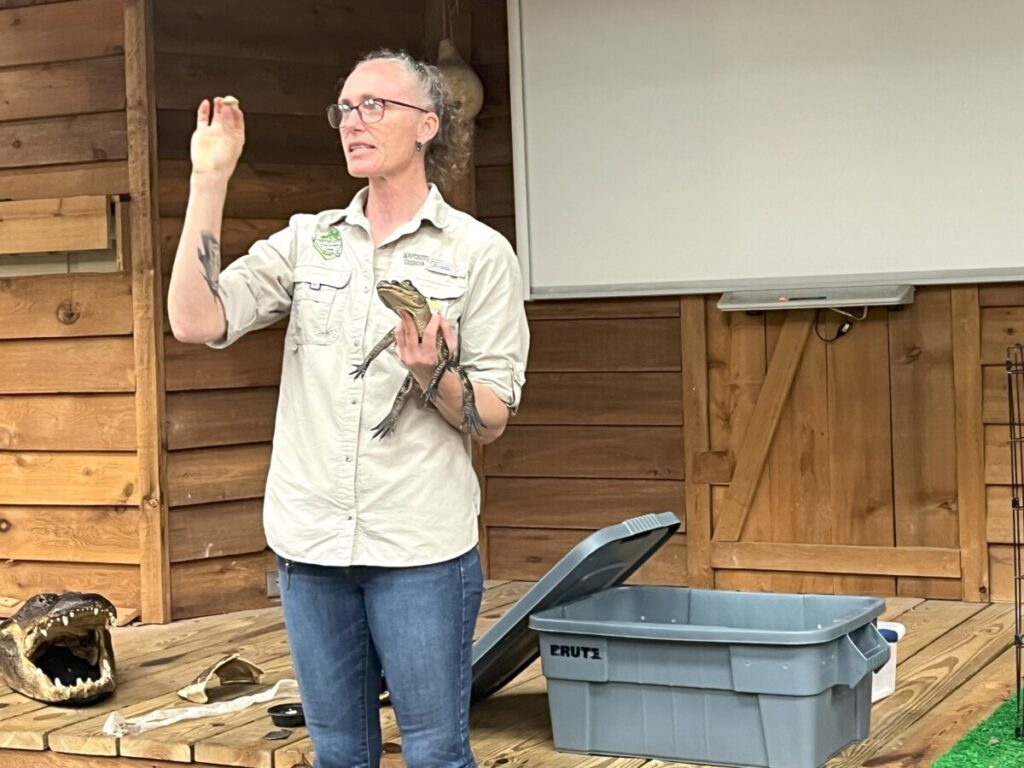
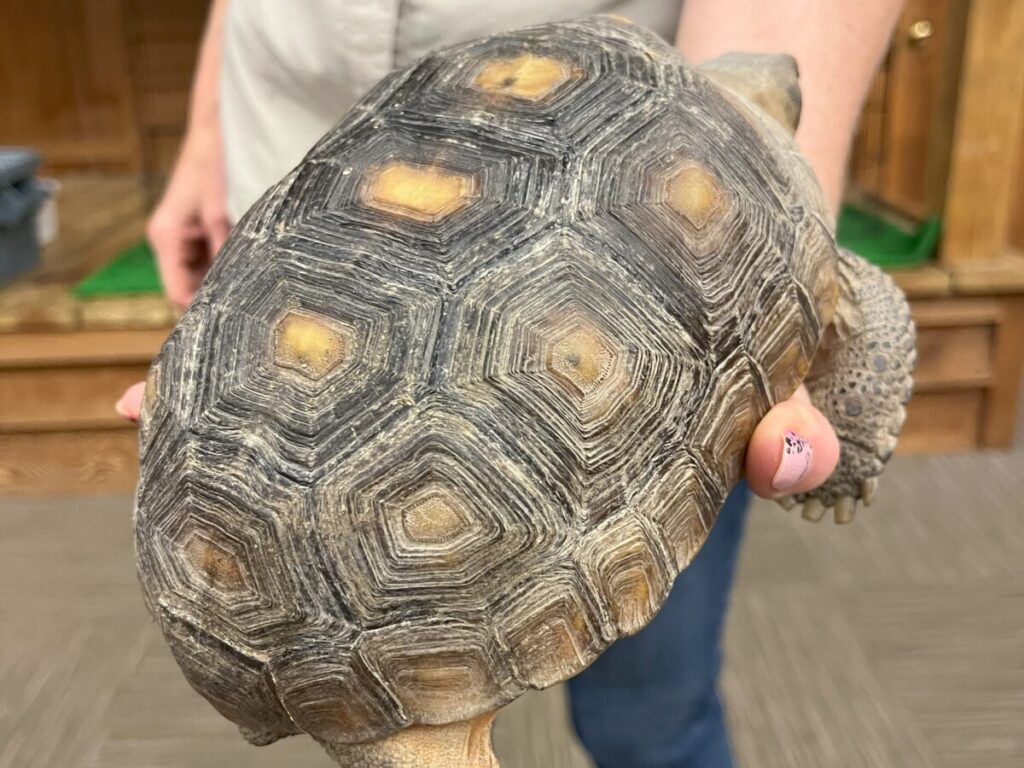
I knew next to nothing about the gopher tortoise, the state reptile of Georgia. The species protects other animals by digging deep burrows into the sandy soil found along the coastal region. Because maturity to reproduce takes 10-15 years and the females only lay 5-15 eggs each year, they remain on the federally threatened list. The gopher tortoise we met exhibited lots of personality and kept trying to escape out of his cage.
If you don’t have time to see the nature show, you can walk through the nature center to see live reptiles and displays. However, you’d be missing out, especially since Jessica brought the reptiles up to each one of us to pet.
More Information
Okefenokee Swamp Park lies about 12 miles southeast of Waycross. It took us just a little over a four-hour drive from Atlanta. The park offers several admission packages but the best deal is the 3-Hour Swamp Experience for $35. This ticket includes a 45-minute boat ride, train tour, and nature show. Since boats are limited in size, you may want to book timed tickets ahead of your visit.

For more information about the Okefenokee Swamp Park, visit the website here. Also, you can purchase a multi-day pass for $60 to include a visit to the main entrance of the Okefenokee National Wildlife Refuge (near Folkston – just 45 miles south of the park). At that location, Okefenokee Adventures offers 90-minute boat rides, walking trails, and a 7-mile scenic drive.
